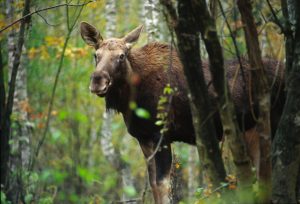| Project duration: | 2019-2022 |
|---|---|
| Project status: | Active |
| Project leader: | Magdalena Niedziałkowska |
| Project co-investigators: |
dr hab. Krzysztof Stefaniak dr Danijela Popovic dr hab. Małgorzata Suska-Malawska dr hab. Paweł Mackiewicz dr Mateusz Baca mgr Hanna Zalewska mgr inż. Maciej Sykut mgr Piotr Chibowski |
Research Project Objectives
The aims of the projectare: recognition of the geneticdiversity, identification of habitats of occurrence and reconstruction of changes in the range of moose (Alcesalces) in Eurasia in the time period of the last 50 000 yearsusingvariousinterdisciplinarymethods. Recognition of the phylogeographicpattern of differentmtDNAclades of Eurasianmoosesince the LatePleistoceneuntilrecenttimeswill be based on the analyses of mtDNAextracted from bones and teeth of thisspecies. Obtainedgenetic data will be used to estimate the divergencetime of differentmtDNAclades, reconstruction of the LastGlacial Maximum (LGM) refugia, postglacialcolonizationroutes and changes of the effectivepopulationsize of moose in Eurasia. The habitatsoccupied by the species in the past by will be identifiedbased on the analyses of stableisotopes of carbon and nitrogenextracted from bones and teeth of the studiedindividuals. In the final step, the changes in the range, occupiedhabitats, effectivepopulationsize and the geneticdiversity of moosewill be compared with the climaticoscillations and the changes in ranges of differentvegetationtypessince the LatePleistocene.
Hypotheses
We supposethat the geneticdiversity of moose was higher and the Eurasianpopulation of the species was morehomogenous in the past. We hypothesizethat the range of moose, theireffectivepopulationsize and geneticdiversityhavebeenchanging in time with climaticoscillations, namelydecreasing in warmerperiods. The moosesurvived the LGM in largerareathanit was previouslythought and respondeddifferentlythanotherspecies of Eurasianlargemammals to climatechanges. In the Holocene the range of mooseshrunksignificantly and the Eurasianpopulationdisappeared from some of its LGM refugialareas but probablysurvived in largecontinuousrange in the eastern part of Europe and in someareas in Asia. In addition to climateoscillationsalsohumanshadsignificantimpact on the distributionand geneticdiversity of moose.
Researchprojectmethodology
The studywill be performedusingnovelresearchmethodsuch as analyses of the wholemtDNAgenomes of moose, analyses of the carbon (13C) and nitrogen (15N) stableisotopecompositions in bonecollagen, AMS radiocarbondating and spatialanalysesusingGeographic Information Systems (GIS). We willuseboth the contemporarysamples of Eurasianmooseas well as the fossil materials collected from differentzoologicalcollections in Europe and Asia.
